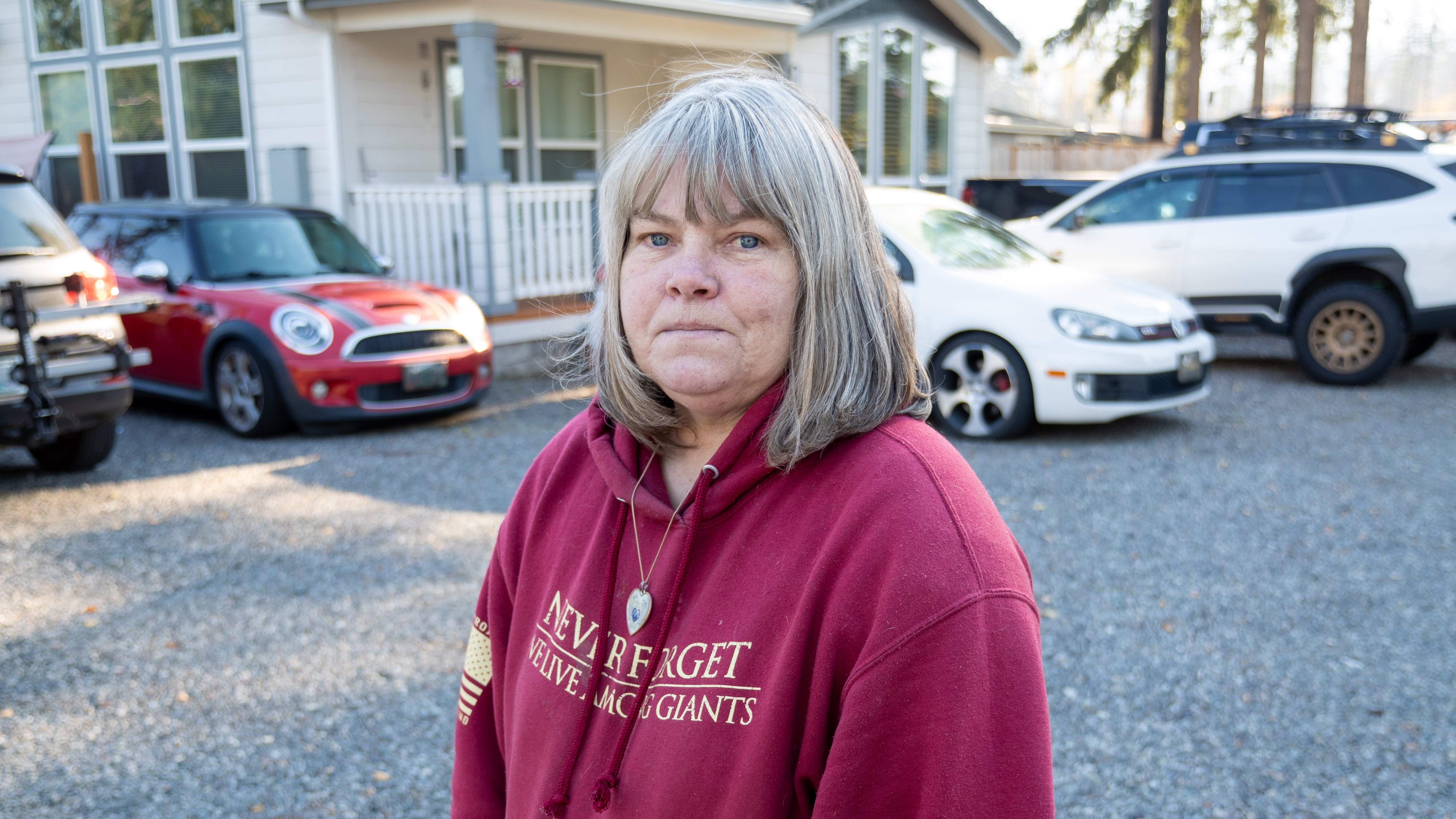During more than five months of reporting, the Oregon Journalism Project spoke with many survivors of the Santiam Canyon fires of 2020, in addition to Kathleen Becherer.
Here are two of their stories:
On Sunday, Sept. 6, Diane Turnbull heard what sounded like an explosion.
She rushed to the front door of her small home in Gates, on the Santiam River, and she couldn’t quite process what she was seeing.
The glow came from a nearby chain-link fence at the Old Gates Schoolhouse, the town’s community center. Powerful wind gusts had taken down a power line, which came to rest on the fence. The metal fence became so hot it burst into flames. In a matter of minutes, the fence ignited trees, shrubs and the schoolhouse itself.
Turnbull didn’t wait long, particularly after getting a text from a co-worker who lived nearby: “Our building is on fire.” Turnbull recalls: “I packed up my dog, couldn’t find my cat, and drove out of there.”

Turnbull stayed with family in Bend as the news unfolded: Gates, which to many travelers is simply a way station to Central Oregon, lost 670 buildings that night, most of them houses. “That’s more than half of the city’s housing stock,” says Huda Alkitkat of the Population Research Center at Portland State University.
The devastation in Gates mirrored what happened in other small Oregon towns, including Otis, Detroit, Blue River, Vida, Phoenix and Talent.
Turnbull’s house didn’t burn, and she was one of the first of the Gates refugees to return. When she did, she says, the scene was eerie: “It felt like I was all alone. I would walk around and all I could see was burned debris.”
For Gates residents, the decision whether to flee was complicated.
Many were determined to stay and protect their homes.
Chris Grom was one of them. She and her husband loved their house perched above the roaring, crystalline Santiam. When word first came that the fires were threatening, they decided to stay.
As the wind picked up, a tree came down and landed on the power line that served the Groms’ house. The impact tore the electricity meter right out of the wall. She found herself face-to-face with a live power line.
By then, Grom could see to the northeast that the Old Schoolhouse was on fire, while to the south she could see flames about a mile away atop Potato Hill advancing toward Gates.
“I said, are we trapped? What do we do? We’ve got to go,” Grom says. They grabbed their dogs, jumped in their car and left, heading for Highway 22.
The major east-west thoroughfare serving the area, Highway 22 was jammed and traffic crawled. In places, fire was burning right down to the shoulder of the road. “I thought we were going to die,” Grom says. “I’ve never been so scared in my life.”
Grom and her husband spent a few nights at a city park in Silverton, then a month with her uncle in Salem. Ultimately, a friend allowed them to stay for nearly two years in his rental house in Molalla.
It was two years before Grom and her husband moved back. Similar to other local residents, Grom says her normal confidence has given way to anxiety and stress.
“That’s why I joined the lawsuit,” Grom says. “It’s not about the money. It’s about listening to my story. Listen to what we went through and understand.”
Like a lot of others who have joined the class action lawsuit, the passage of time has just intensified Grom’s anger at PacifiCorp. The company “made the decision not to shut the power off and burn our houses down,” she says. “And now they get to choose when it’s finished, even though we won. So we still have no say.”
